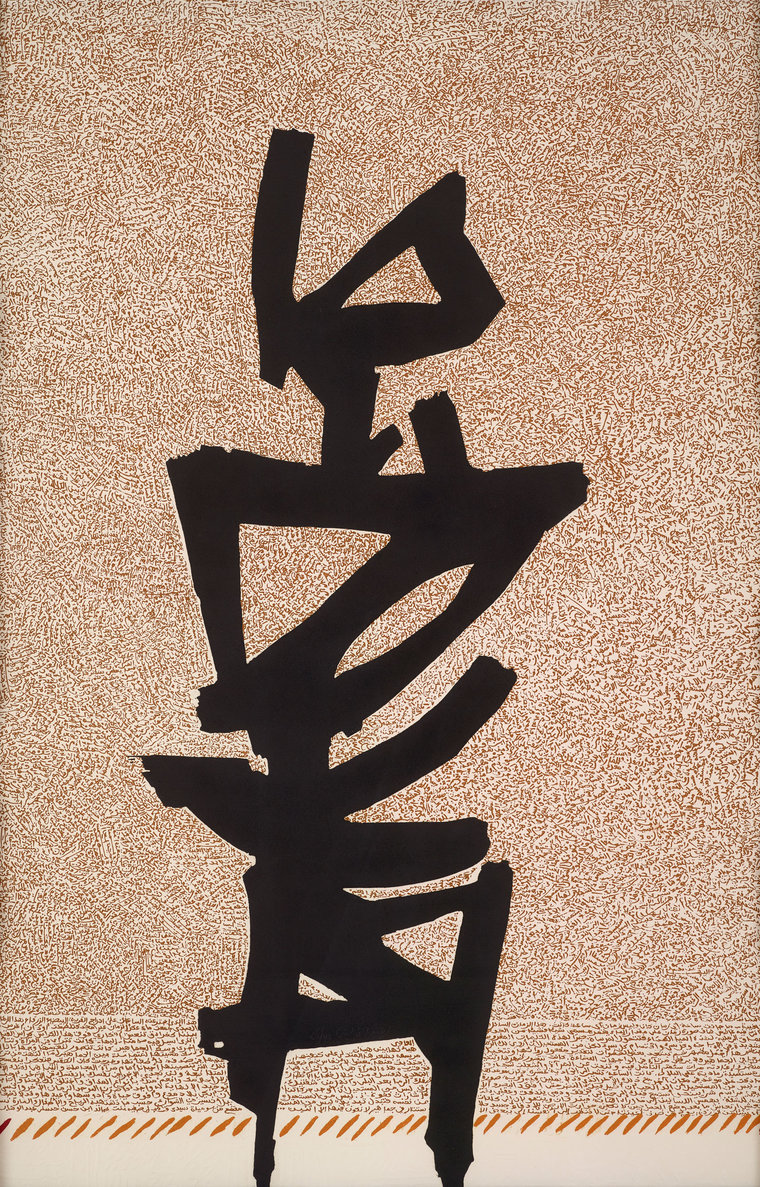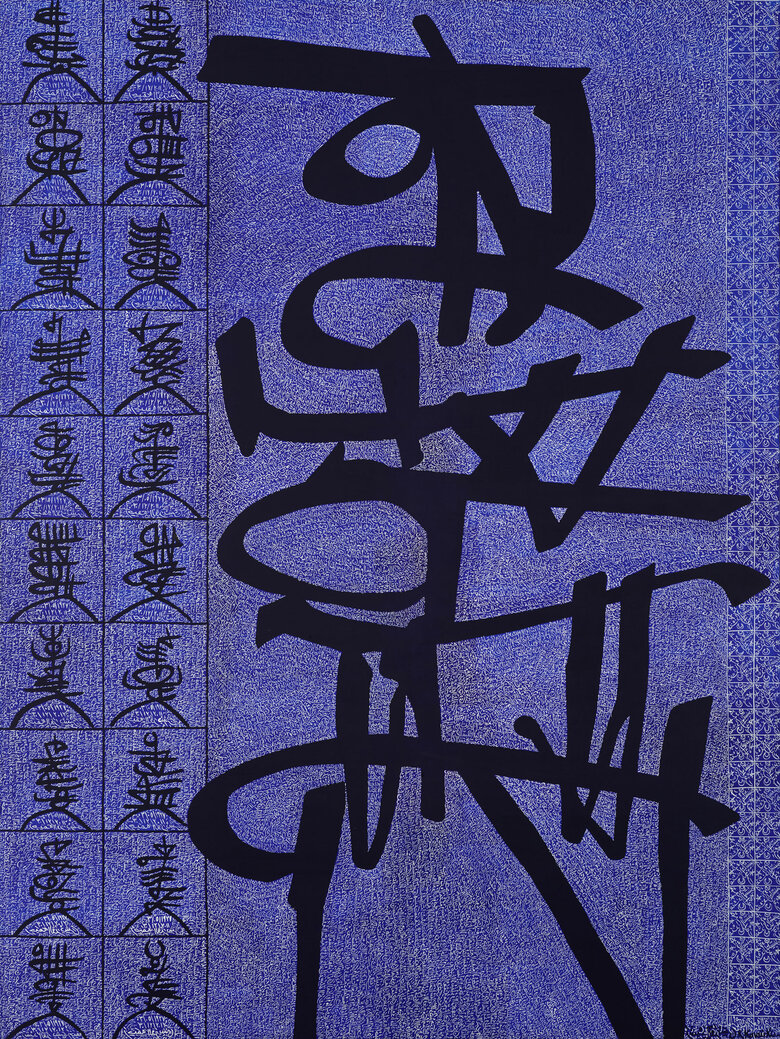L’encerclement de la Poussiere d’un Homme, part of a limited edition of 40, is one of Rachid Koraichi’s intricate prints on paper through which he explores the human existence, spirituality, and the transience of life. Koraichi’s family are descendant of the Quraysh Arab tribe, who inhabited and controlled Mecca and its Kaaba c.600 CE. Rachid Koraichi was born in Algeria into a Sufi family of Qur’anic scholars and copyists. Thus, his work is deeply influenced by Sufi mysticism and the rich cultural heritage of the Islamic world.
L’encerclement de la Poussiere d’un Homme, 1986, is a reflection of Koraichi’s mastery of etching, a technique that he has refined throughout his extensive career. The hand-written design and inner abstracted figure are incised into a large copper plate, which is then coated with an acid resistant material called a ground. The plate is then exposed to acid, which etches or bites into the plate leaving grooves where the marked words or figure were drawn. The ink settles into the etched lines, and the plate is pressed onto paper, transferring the image. This meticulous process allows for the creation of highly detailed and textured works, as seen in Koraichi’s piece.
Koraichi combines the fluidity of Arabic script with abstract expressive forms, creating a dynamic composition that invites deep contemplation. The light coral hued background is densely filled with Koraichi’s Arabic hand writing, rendered in a rich ochre hue, forming a textural and almost hypnotic field. However, Koraichi emphasizes that these writings are not traditional calligraphy but rather an artistic personal expression. As he explains, “It’s like writing your memoirs or a poem. It’s personal; it is my handwriting, not my calligraphy.” For Koraichi, writing and drawing are intrinsically linked, emerging from the same creative impulse.
Dominating the central part of the composition, is a bold, black form composed of broad, irregular lines. The central figure seems to be standing on a frontal foreground, although depicted flat by the artist, with horizontal handwriting, engulfed by illegible text.
At first glance, this figure may appear to be reminiscent of the letter characters of East Asia, but Koraichi reveals that it represents an image of a dried-out man, encircled by dust. It seems like the figure evokes a sense of descent or sinking into the background of the Arabic handwriting. This symbolic depiction of fleeting human experience underscores Koraichi’s ability to bridge the boundaries between writing and drawing, creating a unified expression of the human condition.
L’encerclement de la Poussiere d’un Homme, 1986, was created during Koraichi’s collaboration with EDITART, a fine arts publishing house in Geneva, founded by the Cuban revolutionary Orlando Blanco. Blanco, who transitioned from political activism to art publishing, sought to encourage painters, sculptors, writers, and poets to publish illustrated works. He invited Koraichi to produce a significant large-scale artwork, leading to the creation of L’encerclement de la Poussiere d’un Homme. The etching was completed at a printmaking studio in Barcelona under the guidance of Japanese printmaker Yamamoto.
Koraichi’s print is a testament to the Sufi concepts of the ephemeral nature of life and the eternal quest for spiritual enlightenment. The title itself, L’encerclement de la Poussiere d’un Homme or The Encirclement of a Man’s Dust, reflects a contemplation of mortality, the impermanence of the physical body, and the enduring nature of the soul.
Signed in Arabic with the first and family name of the artist and inscribed "25/40" on the lower middle front






